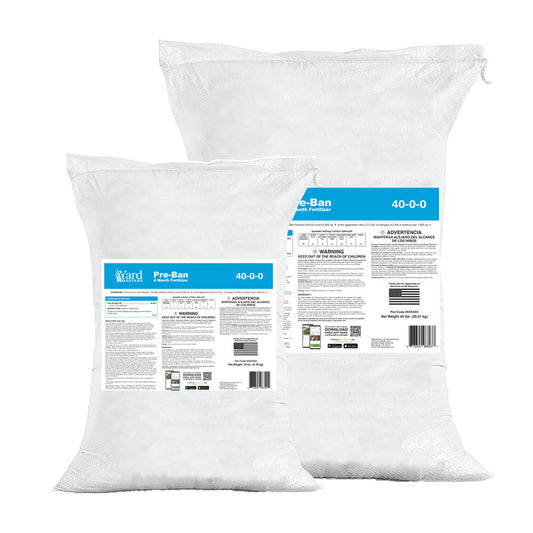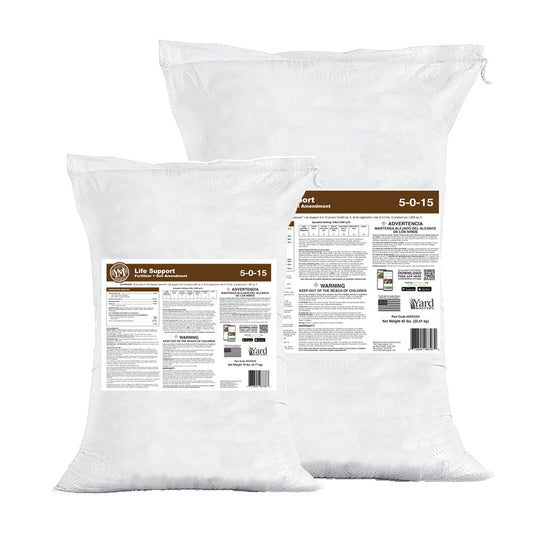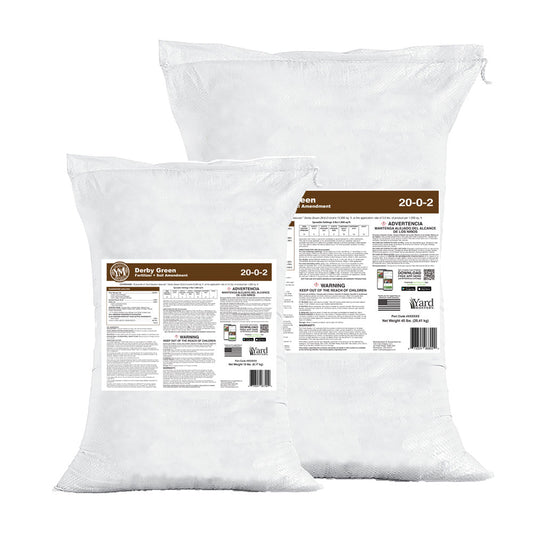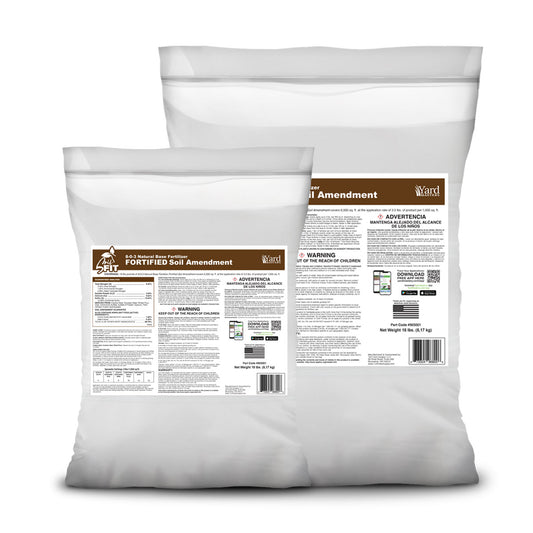What’s up ya’ll and welcome to summer! And with that, we want to show you How To Cure Lawn Disease Problems and Fix Brown Patches In Your Lawn.
Essentially, this is a fungus that's starting to affect lawns across the transition zone and up into the midwest.
Let’s take a look at Rocky Mount, NC. Beautiful country there where Paul, from Paul’s Prime Cuts, lives and works.
This area is known as the Atlantic Coastal Plains and you will find Turf Type Tall Fescue there, Centipede, Zoysia, Bermuda, and even Bahia.
Paul deals with it all but the main reason I wanted to call attention here if the brown patch disease he shows in his tall fescue lawns.
Check out this video where he talks you through How To Fix Brown Patches in feascue:
Paul won’t admit it, but he is one of the smartest lawn and soil gurus on YouTube.
His lawns always look awesome and it’s a real privilege for us to be able to hear from a lawn professional as he walks through the strategy that he employs when brown patch outbreaks occur.
I highly recommend you subscribe to his channel. Paul's Prime Cuts YouTube Channel
Here is Paul's Strategy
In Paul's Video, he lays out a strategy like this:
- Apply Fungicides to stop the disease from spreading or getting worse. Paul mentions a two-pronged attack using products that attack the disease with 2 different modes of action. I call this the Bullet Proof Strategy.
- Azoxystrobin is the first active ingredient and we can get at local stores in the form of Scotts DiseaseEx.
- Propiconazole is the second and we can get that in a hose end option (RTS- Ready To Spray) from Bio Advanced.
If you have active disease in the lawn this is your first step to success in overcoming it.
NOTE: This plan works for any disease in any lawn, not just brown patch
Get this application down to stop the disease from progressing further.
Put these both down on the same day and get them watered in - ¼” (for brown patch, it is a disease of the roots so we want both products watered in).
You may need a second application of both 14 days later if humid, still air persists, but there is more you can do to help things clear up.
The cost of each is about $20 at the store and that covers 5,000 sq ft. So consider about $40 per application if you have a 5,000 sq ft lawn.
(Note: it should go without saying, when disease is present in the lawn, catch clippings when you mow and if you have to water the lawn, water deep and infrequent in the mornings. Airflow is key.)
2. The second piece of the puzzle is about oxygenating the soil and getting microbes to help us in recovery. Paul mentions applying Humic Acid, sea kelp, and micronutrients.
I’m sure he has his own recipe/cocktail mix that he uses, and we also have available to use some tools that will work the same way and in fact, the Bio-Stimulant Pack is perfect for this.
- Humic Acid - if you have disease present, Apply Humic12 at 6 oz/1,000 sq ft every 14 days. Water it in.
- MicroNutrients (and potassium) and Sea Kelp - this is where the 0-0-2 MicroGreene comes in handy since it has the potash, micros, and is also juiced with humic acid and sea kelp. Apply MicroGreene at 6 oz/1,000 sq ft every 14 days.
- Air8 - I’ve been using this more and more. In fact, I’ve started using Air8 to “water in” all of my other applications.
In other words, after an application to the lawn of anything: fertilizer, humic acid, micros, fungicide, insecticide, Hydretain, etc… if it’s something that needs to get into the soil, I spray out Air8 at 6 oz/1,000 sq ft on top of it and water that all in together.
My thinking is that Air8 breaks bonds in the soil and opens up space - which then allows my application to pack into that space - whether its a fungicide I want packed in there or micronutrients or fertilizer, - the Air8 gets it there.
NOTE: Another thing I learned about Air8 is its ability to clean out any clogged sprayer.
No matter what I spray from my hose end or pump sprayer, I end the run with some Air8 and it literally clears all the lines of anything that is in there - much better than a flush of water alone could do.
I still finish cleaning with clear water, but I run Air8 through like a cleaner beforehand.
Have a “clogged” Chameleon sprayer?
Put 6 oz of Air8 in the jar, top it off with water and go spray it out in your landscape beds or in a troubled area of the lawn - whatever you want - just get that sprayed through and then flush with water. I’ll show this on video coming up too.
Disease Recovery Plan Summary
You can do all of these steps together - the products will not interfere with one another. Fungicides, MicroGreene, and Humic12 can all be sprayed down along with a topper of Air8 and watered in together.
When disease is present:
- Apply Both Fungicides
- Apply Humic12 6 oz/1,000 sq ft
- 0-0-2 MicroGreene 6 oz/1,000 sq ft
- Air8 6 oz/1,000 sq ft
Water it all in ¼” of water. Mow regularly, catch clippings, water deep and infrequent in the AMs only. 14 days later - repeat. Hope for the best!
Seems like a lot doesn’t it?
It’s really not and in fact, for your second application, you may consider leaving out one or both of the fungicides if it looks like conditions are improving.
Continue with the applications of Humic, MicroGreene, and Air8.

Should I Fertilize? Ie: Milorganite or CarbonX?
With Brown Patch, you do NOT want to push in nitrogen.
The combination above is a slow play strategy that will work much better with Rhizoctonia (brown patch) which is also called “root rot fungus.”
The last thing you want to do when your turf is stressed in its root system is to stimulate it to push top growth. Best to help it recover slowly and give it the support it needs while clearing the disease out with fungicides.
Just in case you missed it, I wrote a cocktail menu that gives you lots of other ideas on ways to use your N-Ext products.
I’ve got a video coming up showing you my first Summer Blackout application of the season which uses 12 oz/1,000 sq ft of MicroGreene to keep the lawn double dark all summer while maximizing the free nitrogen provided by our frequent lightning storms.
Last Disease Tip
Brown Patch, Red Thread, or Dollar Spot - no matter which disease your lawn may have, one way to help it recover even faster is to paint the diseased/dead plant material with D-Thatch at 9 oz/gallon.
Just paint the spots.
I talked recently in my podcast about how this can help the lawn recover faster because microbes love to feed on dead and decaying plant material - doesn’t matter why it’s dead of decayed - they just munch it.
With that, I hope you are having a great summer, lots more to come as we watch the weather and adjust our strategies to match.
As always, Enjoy The Mow, and I’ll see you in the lawn!
-AL

Products I recommend:
[Warm Season Turf] - Hybrid Organic Lawn Program
Get the Updated 2019 Warm Season Step-By-Step Lawn Guide to dominate your neighborhood. Perfect for the following grass types:
- St. Augustine
- Bermuda
- Zoysia
- Bahia
- Centipede
With this guide, you'll also get our "Starting Late Summer Plan" PDF so you can start improving your lawn today!
[Cool Season Turf] - Hybrid Organic Lawn Program
Get the Updated 2019 Cool Season Step-By-Step Lawn Guide to dominate your neighborhood. Perfect for the following grass types:
- Kentucky Bluegrass
- Perennial Ryegrass
- Turf Type Tall Fescue
With this guide, you'll also get our "Starting Late Summer Plan" PDF so you can start improving your lawn today!
[N-ext] Bio-Stimulant Pack

[N-Ext] Build-a-Box (4 Gallon Kit)





![[Warm Season Turf] - Hybrid Organic Lawn Program](https://ci6.googleusercontent.com/proxy/oSuX05onuuZsBixLYWDgxqlgLiObSgsBZ2Jp9uR1sFopeZptdXPP0f5b-zA3hwjyItH_vIbcra-BxbeQeAyxIDj2wZIyKbmKIjvqohCiV5t0BoGwFdHcRnLcmzjMN9nDcsYOSaWwHJPDIn5g02yzq2xCODfTS-qrGNhFQByW6G14Ms2w9qAl8RTudUGp0uYbeKWQgZF_HA=s0-d-e1-ft#https://cdn.shopify.com/s/files/1/2451/9069/products/WarmSeason_FeaturedSmall_d403a62c-a579-4084-b6f0-8b49e80c3ca2.jpg?v=1558622794)

![[Cool Season Turf] - Hybrid Organic Lawn Program](https://ci3.googleusercontent.com/proxy/AlDnptTuJlHTidxjo9bpGI4mdodzV0ysF1Upqm4jEa6DrsSRAsUgiYnYNSPfmm6OCfH-8xHbtxX3qN3t-GfaDp5UPxR7OZ435hciCpEY7_04om1I1IlOV9-7Gi92Tc96Af7y1tv7RLnJ_9baP_4AtI4=s0-d-e1-ft#https://cdn.shopify.com/s/files/1/2451/9069/products/CoolSeason_FeaturedSmall.jpg?v=1558622708)
![[N-ext] Bio-Stimulant Pack](https://ci6.googleusercontent.com/proxy/TBlj3c__i4yr-gZLQI4QBw9hiBEtRQVbDjZbIN1fC74VxZYFa3x_DVbe8hkgpweGyeTIoXAcUuJIEBr-GXb7UlVhZS5nvGvRZ0EF2FO0C1aG_k7F9go5DsZSj8L8cejCiFHqCo4uZhe-HZzXMetBGGEy=s0-d-e1-ft#https://cdn.shopify.com/s/files/1/2451/9069/products/MicroGreene_FeaturedSmall.jpg?v=1552932845)
![[N-Ext] Build-a-Box (4 Gallon Kit)](https://ci4.googleusercontent.com/proxy/HQfyLvHzR-a81s9XQqc5vRbic7Xe-jAvAxQQPxr89ES82ueq3fVEkAp51pp0XvP-qBmA5Z7ad6DPwwJ3cn2IiWv82DJpTvrF4EBHyDvxmewtKUAgR0zvOnMLzGrYoiIF5W4qEOxHorPHgWJgqA=s0-d-e1-ft#https://cdn.shopify.com/s/files/1/2451/9069/products/BuildAbox_4oneGallon.jpg?v=1554754450)
![[N-Ext] MicroGreene 0-0-2 - 5 Gallon](https://ci4.googleusercontent.com/proxy/TFgZ_M4fv4Gl7ROcpsHbyZnQeVrzEx-ld1AR33y_Qx7lROSKN3J2yxKFSbFyEfdm4a7mVX0gwW6Oq7m-riLOWPGJo5zd5KTxvxfSkfvlHvp1g4BkuFW9_AknIdpQ0GQKGEEUCDOknHvpNHTxJxyx5JwYoPRZlwl63XI-TjzRsLX7lb3SMDGjwcKuaH5v5WRnMmoqYv2gmzDDuhUMiU7evek5Qg=s0-d-e1-ft#https://cdn.shopify.com/s/files/1/2451/9069/products/0-0-2_MicroGreene_Fertilizer_jug_3x3_186c0c12-2baa-47b4-ab40-bc5498f97678.jpg?v=1521383019)
![[N-Ext] Humic12 - 5 Gallon](https://ci4.googleusercontent.com/proxy/NCcBuN6OzUN-BGHmDL9gCR2RhUGwyMfko-6iC_F0KSf1PuisOybsq49V_xNxO7FQ2SR_fd-8bTmPkQgT7ovWABKYNs13xebDri7C4bwYKuzFtIVrX3w0cz7b2wzx5v0zSINVg1qKjcIZGumhJwSX7AnXRZQBSVgCmZvRNyq5jE_Mv4maW6IeYIAE5kabArNbpRmr6i05aQqcenAFsYLXXGF30h_RZQ=s0-d-e1-ft#https://cdn.shopify.com/s/files/1/2451/9069/products/N-Ext_Humic12_Liquid_Humic_Acid_jug_3x3_1f45509c-f6f0-4ccd-aa5d-d6d2a987988c_medium.jpg?v=1521042478)



